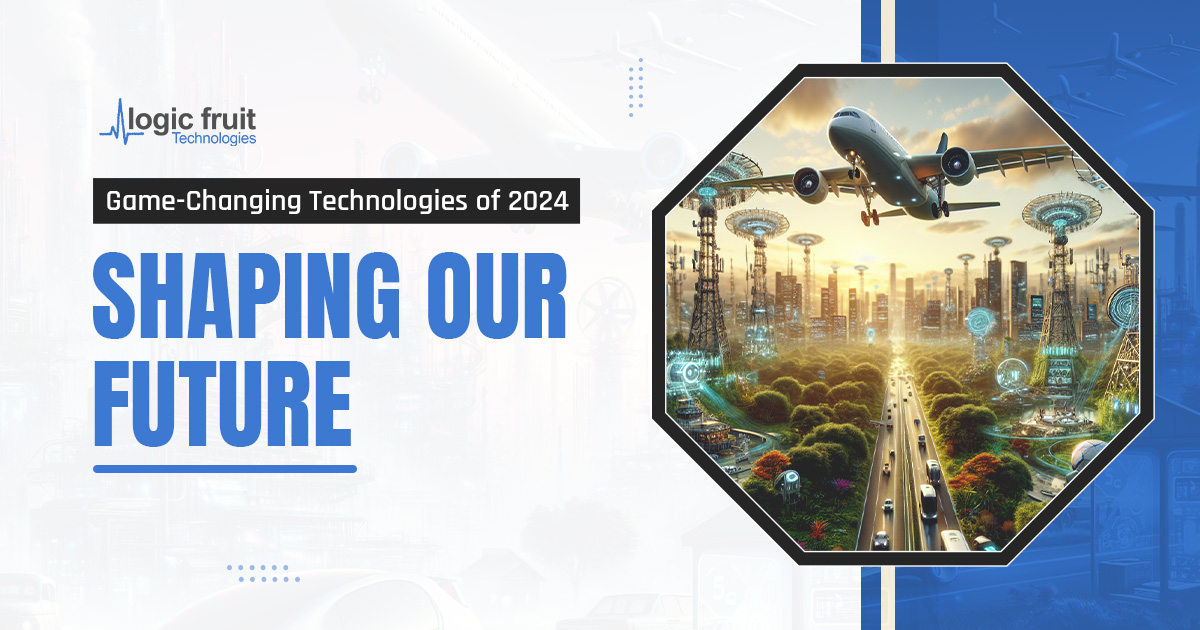Introduction
Computer vision, which is becoming increasingly prevalent, is being adopted by a wide range of businesses, including those in the consumer electronics, retail, and manufacturing sectors.
An image is converted to a digital format during image processing, after which it is subjected to a number of processes in order to extract relevant information.
Recently, a variety of technological sectors have been greatly impacted by artificial intelligence (AI) and machine learning (ML).
Image processing is the use of computer techniques to modify digital images. Image processing has been substantially improved because of AI and ML, which allow robots to analyze and interpret images more quickly and accurately than humans.
The capacity to recognize patterns and features in big collections of photographs is a capability of AI and ML systems.
They can therefore perform tasks like object detection, classification, segmentation, and image enhancement very effectively.
In this blog, we are going to explore image processing in AI and ML, applications of AI image processing and ML-based image processing, and more.
Without further ado, let us plunge into the realm of Image Processing in Artificial intelligence and image processing in machine learning!
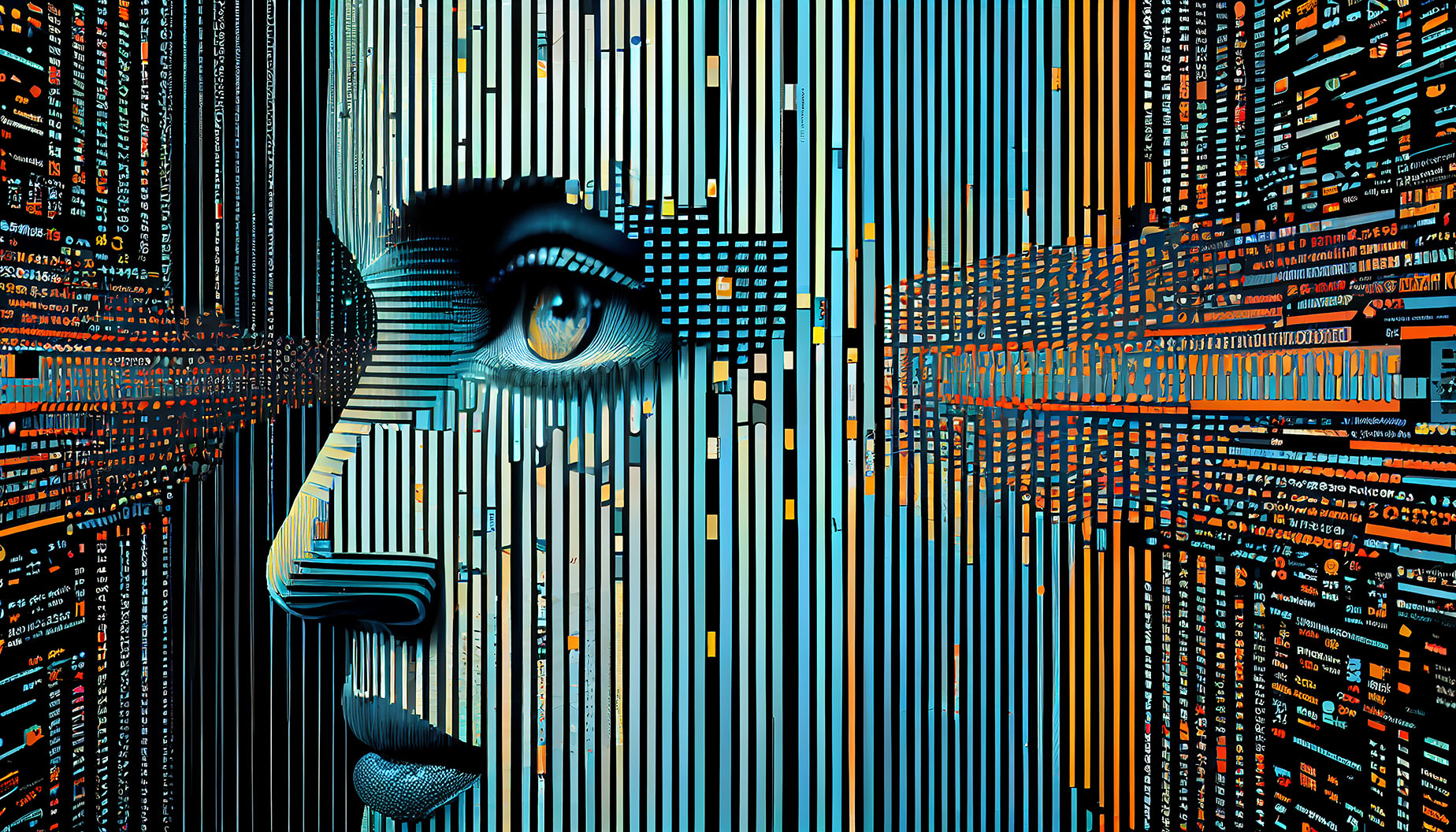
What is Image Processing
Image processing is the process of transforming an image into digital form and performing certain operations to get some useful information from it.
The image processing system usually treats all images as 2D signals when applying certain predetermined signal processing methods.
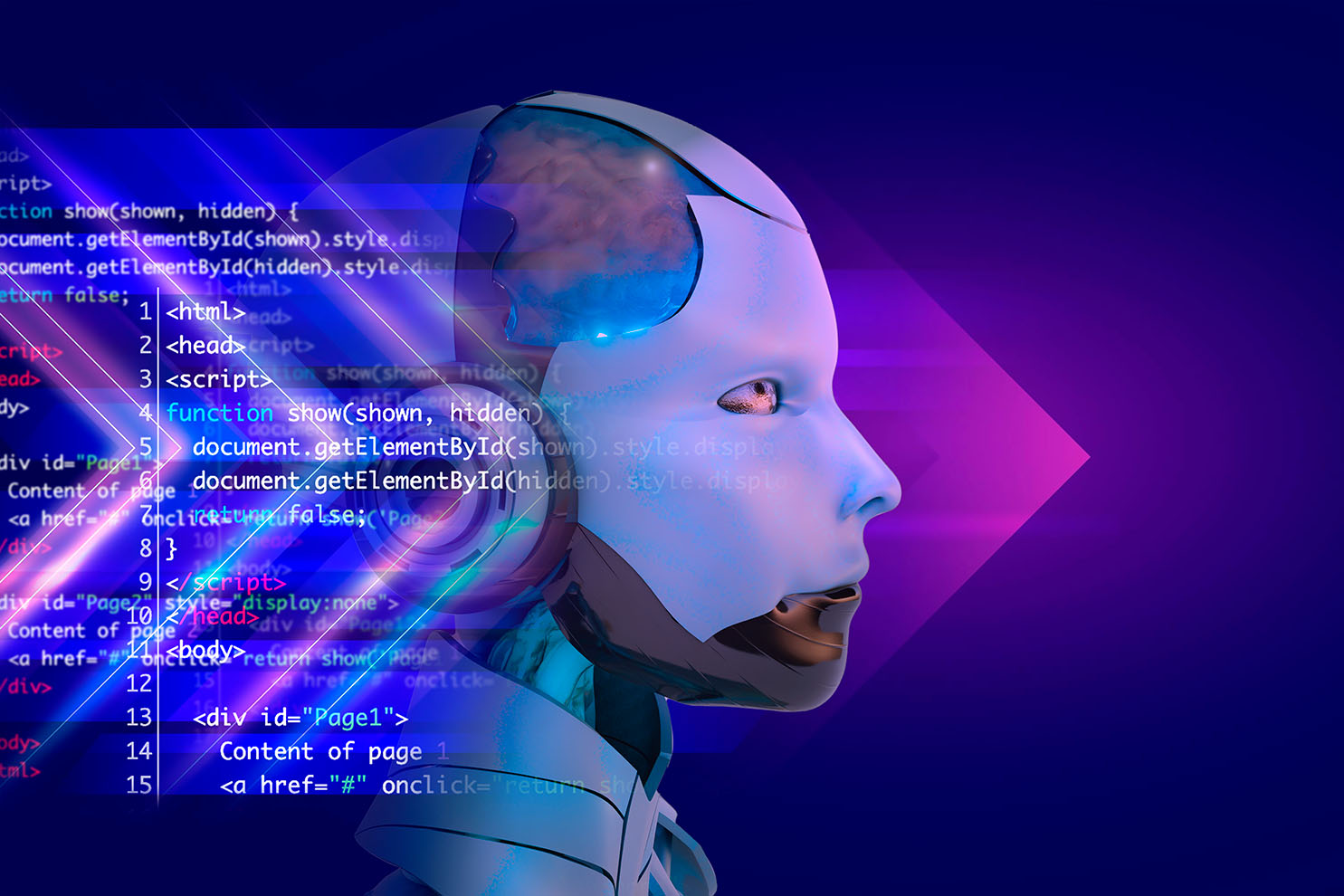
With a variety of use cases including visualization, pattern recognition, segmentation, image information extraction, and classification, image processing can be done in two ways:
Analog image processing of physical photographs, printouts, and other hard copies of images
Digital image processing uses computer algorithms to manipulate digital images.
Main Purpose of Image Processing By leveraging image processing, valuable insights can be derived from visual data, enabling advancements in various fields and applications.
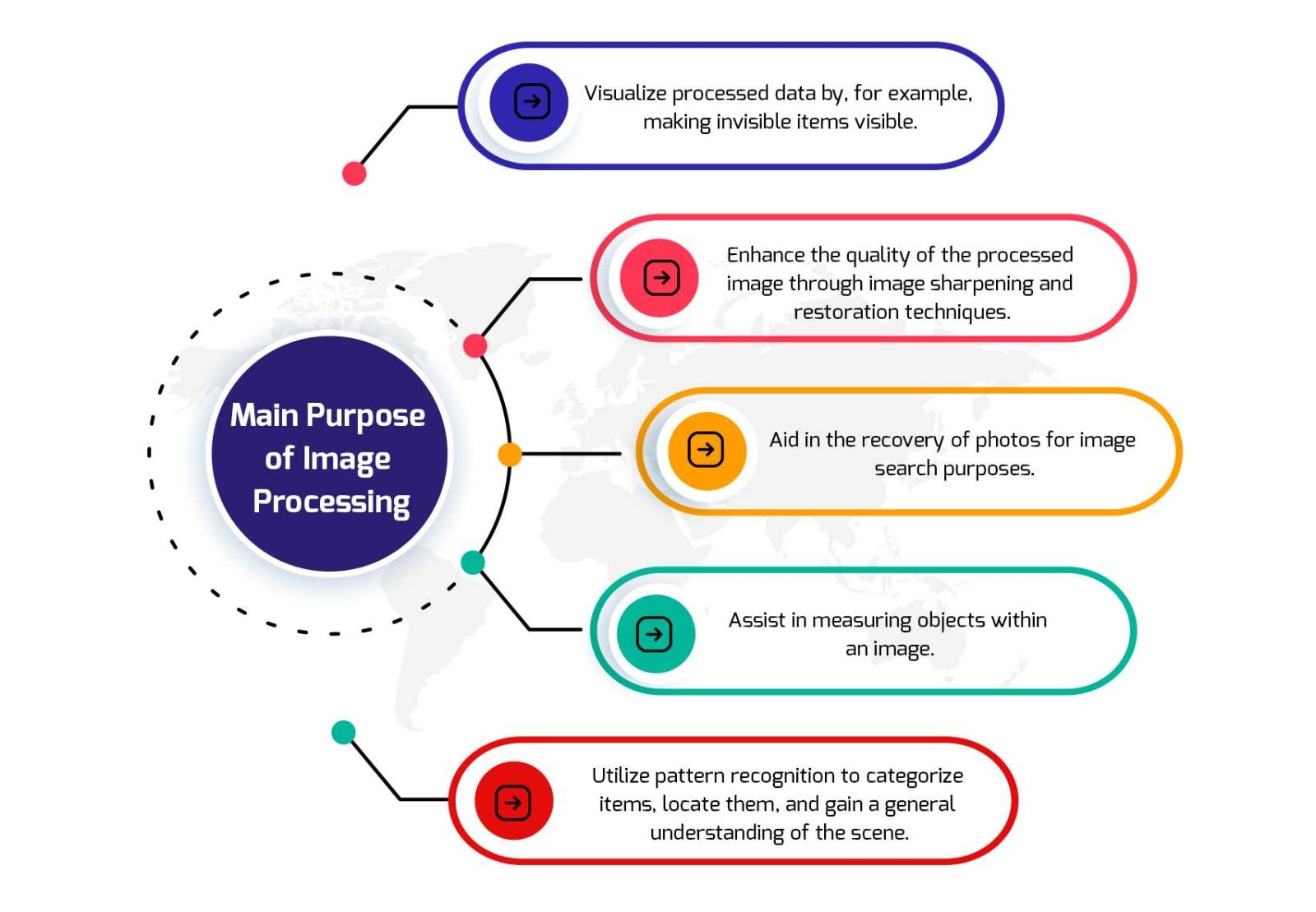
Artificial Intelligence and Machine Learning-based Image Processing
Image processing has been significantly impacted by two rapidly developing technologies: artificial intelligence (AI) and machine learning (ML).
Artificial intelligence (AI) describes a system’s capacity to carry out operations that ordinarily require human intelligence, such as perception, thinking, and learning.
On the other hand, machine learning is a subset of AI that uses algorithms to examine data and discover patterns without being explicitly programmed.
Numerous industries, including healthcare, retail, automotive, and entertainment, use AI image processing and ML-based image processing.
To help with diagnosis and treatment planning. In the healthcare industry, AI and ML algorithms are used to evaluate medical images like X-rays and MRIs.
Image processing algorithms can be used in retail to examine consumer behavior and offer tailored recommendations.
To improve safety systems like collision avoidance in the automotive sector, object detection and recognition algorithms using AI and ML are applied.
The AI- based image analysis, manipulation, and use of images have been revolutionized by AI image processing and ML-based image processing, creating new opportunities for creativity and innovation across a variety
Image Processing Working Mechanism
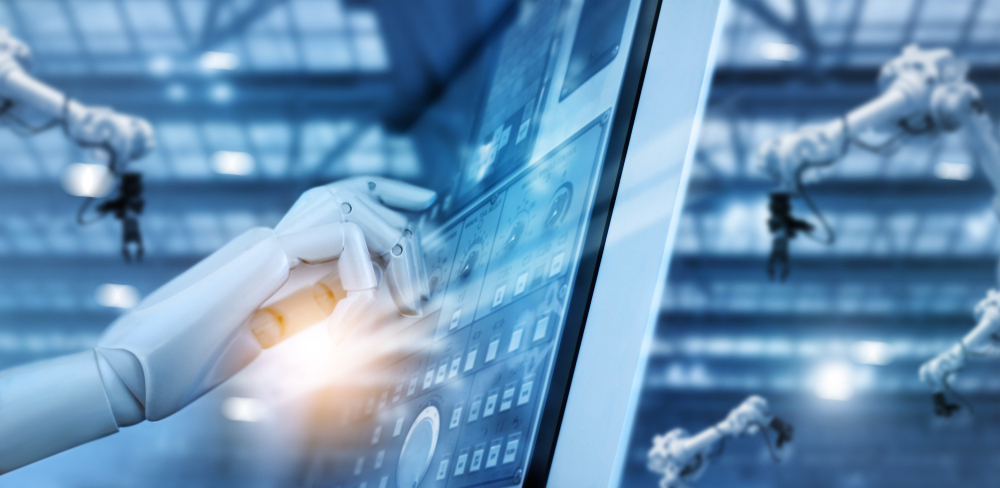 Source: https://www.shutterstock.com/image-photo/hand-robot-working-on-control-panel-1129721228
Source: https://www.shutterstock.com/image-photo/hand-robot-working-on-control-panel-1129721228
Algorithms for artificial intelligence and machine learning typically employ a workflow to learn from data. For AI systems to make highly accurate predictions, a substantial amount of high-quality data is required.
In order to properly analyze, annotate, and process photos for AI/ML, we must ensure that the images are generic and diverse.
The next step is to employ computer vision (CV) to analyze, load, transform, and modify images to produce a perfect dataset for the AI system.
 Source: https://data.embeddedcomputing.com/uploads/articles/authorfiles/images/image-20221216151311-1.png
Source: https://data.embeddedcomputing.com/uploads/articles/authorfiles/images/image-20221216151311-1.png
An overview of the basic workflow of an image processing system
Acquisition of image
The initial step of the image processing workflow is acquiring the image using a sensor and converting it into a usable format.
Enhancement of image
The process of highlighting and drawing attention to certain intriguing details that an image has hidden.
Restoration of image
The method of improving an image’s appearance by using particular mathematical or probabilistic models.
Color image processing
There are several different methods for digital color modeling, including HSI (Hue-Saturation-Intensity), CMY (Cyan-Magenta-Yellow), and RGB (Red-Green-Blue).
Image compression/decompression
This makes it possible to change the image resolution and size without jeopardizing the quality of the images. The two primary types of image file compression used at this stage are lossy and lossless compression methods.
Morphological processing
Morphological operations are an image processing method that manipulates digital images based on their forms. The techniques are particularly suited for processing binary images since they rely on pixel values rather than numerical values. It helps to eliminate flaws in the image’s composition.
Segmentation, representation, and description
During the segmentation process, a picture is divided into segments, each of which is represented and defined in a way that allows a computer to process it further. Regional features and image quality are both covered by representation. The extraction of quantitative information that aids in differentiating one class of goods from another is the function of the description.
Recognition of image
Recognition based on a description of the object allows for the assignment of a label. Scale-invariant Feature Transform (SIFT), Speeded Up Robust Features (SURF), and PCA is some of the frequently used methods in this procedure.
Advanced AI and ML Image Processing Frameworks for Exceptional Results
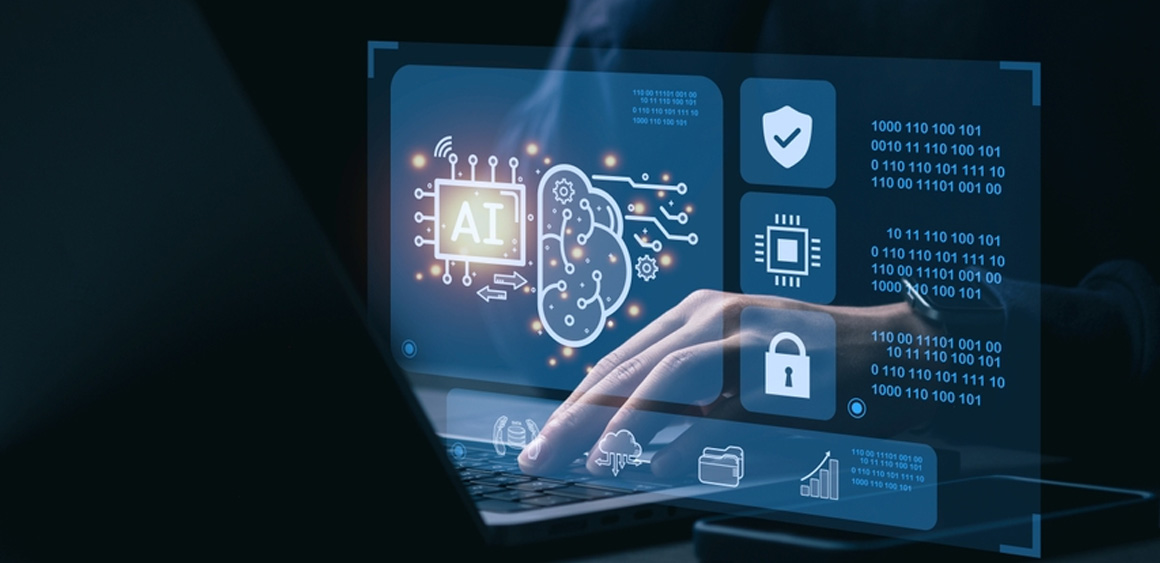 Source https://www.shutterstock.com/image-photo/young-businessman-chatting-smart-ai-artificial-2289004843
Source https://www.shutterstock.com/image-photo/young-businessman-chatting-smart-ai-artificial-2289004843
Experience the power of cutting-edge frameworks for AI image processing and ML-based image processing, tailored to elevate the projects to new heights.
OpenCV – Unlocking the Potential of Computer Vision

Discover the limitless possibilities of OpenCV, a comprehensive computer vision library equipped with a wide array of tools and support techniques.
From object detection and machine learning to image processing, OpenCV empowers you to perform tasks such as data extraction, restoration, compression, and more, ensuring precise and efficient image processing operations.
TensorFlow – Harnessing the Potential of Machine Learning
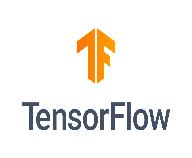 Overcome the challenges of developing and training neural networks for image classification with TensorFlow.
Overcome the challenges of developing and training neural networks for image classification with TensorFlow.
This complete machine-learning framework enables automatic image recognition and classification at a level comparable to human vision.
With support for various neural network algorithms, multi-GPU and parallel processing, cross-platform compatibility, and GPU acceleration, TensorFlow empowers you to achieve exceptional image processing capabilities.
PyTorch – Accelerate Innovation from Prototype to Production
 Accelerate your journey from research prototype to commercial production with PyTorch.
Accelerate your journey from research prototype to commercial production with PyTorch.
This flexible framework offers a comprehensive ecosystem of tools and libraries, providing support for popular cloud platforms and facilitating distributed training.
With PyTorch, you can streamline your image processing tasks, reducing development time and maximizing productivity.
Caffe- Deep Learning for Image Segmentation and Classification
 Experience the efficiency and accuracy of Caffe, a specialized deep-learning framework designed for image segmentation and classification.
Experience the efficiency and accuracy of Caffe, a specialized deep-learning framework designed for image segmentation and classification.
With features like seamless CPU-GPU switching, streamlined model definition and configuration, and efficient computation using blobs, Caffe empowers you to achieve precise and reliable results in your image-processing workflows.
Applications
Machine vision
- One or more video cameras are coupled with digital signal processing and analog-to-digital conversion. A computer or robot controller receives the picture data. Through automated analysis, this latest technology in image processing helps to improve automated processes.
- For instance, when tactile methods are insufficient for robotic systems to sort through a variety of forms and sizes of components, specialist machine vision image processing methods can frequently sort parts more rapidly.
- These techniques properly identify the contours or sizes of objects using extremely specialized algorithms that take into account the image’s color or greyscale values.
Pattern recognition
 Source: https://www.shutterstock.com/image-photo/hand-touching-ui-unlocking-face-identification-1369136507
Source: https://www.shutterstock.com/image-photo/hand-touching-ui-unlocking-face-identification-1369136507
- Data is often categorized using previously learned information or statistical data drawn from patterns and/or their representation.
- Machine learning is then used to train the system to recognize changes in patterns after image processing is used in pattern recognition to identify the objects in an image.
- Computer-assisted diagnosis, handwriting recognition, image identification, character recognition, etc. all use pattern recognition.
Digital video processing

- The quality of a movie is determined by the number of frames or images used every minute and the standard of each frame. Aspects of video processing include noise reduction, detail enhancement, motion detection, frame rate conversion, aspect ratio conversion, and color space conversion.
- Video processing methods are used by a variety of devices, including televisions, VCRs, DVD players, and video codecs.
Transmission and encoding
 Source: https://www.shutterstock.com/image-photo/illustration-laptop-computer-connected-global-internet-189001583
Source: https://www.shutterstock.com/image-photo/illustration-laptop-computer-connected-global-internet-189001583- Instant access to live CCTV footage or video feeds from any location in the world is a sign of substantial improvement in image transmission and encoding technology.
- The term “progressive image transmission” refers to a method of encoding and decoding digital information that represents an image in order to present the image’s key elements, such as outlines, at low resolutions before resampling them at higher resolutions.
- An image is encoded using an electronic analog to several progressive transmission scans of the exact same image at various resolutions. The progressive image decoding produces incrementally better images whose adherence is gradually built up from sequential scan results at the receiver side.
- The outcome is an initial rough reconstruction of the image. Additionally, image compression eliminates extra data to ensure that the image processing is complete and suitable for transmission, reducing the amount of data required to describe a digital image.
Image sharpening and restoration
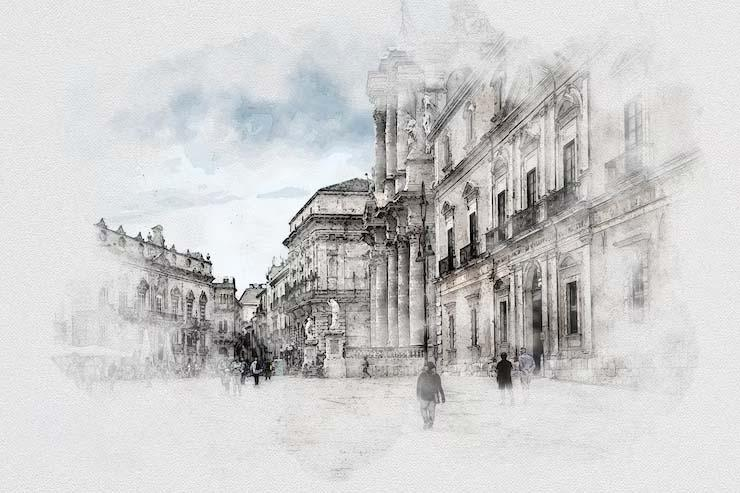
- In this context, “image sharpening” and “restoration” refer to the techniques applied to current camera-taken photos to improve or edit them to achieve desired effects. Included are zooming, sharpening, blurring, colorizing, recognizing edges, picture retrieval, and AI- based image recognition.
- Restoring lost resolution and reducing are the goals of restoration approaches. Image processing methods use either the frequency domain or the image domain. The simplest and most popular method for image restoration is deconvolution, which operates in the frequency domain.
- Image processing can be used to improve the quality of an image, eliminate undesirable artifacts from an image, or even produce whole new images from scratch.
- Image processing is currently one of the technologies that are developing the fastest, and it has a great deal of potential for future widespread adoption in fields like video and 3D graphics, statistical image processing, object recognition and tracking, medical diagnosis, PCB inspection, robotic guidance and control, and automatic driving in all forms of transportation.
Conclusion
In conclusion, machine learning (ML) and artificial intelligence (AI) have revolutionized the field of image processing.
Tasks like object detection, segmentation, classification, and picture enhancement have been made much more accurate and swifter because of the ability of AI and ML algorithms to examine and comprehend images.
A wide range of industries, including healthcare, retail, automotive, and entertainment, use artificial intelligence image processing and machine learning image processing.
Overall, AI and ML-based image processing is a quickly developing discipline that is altering how images are evaluated, modified, and used.
This has opened up new opportunities for innovation and creativity in a variety of industries.
Future applications in areas like virtual and augmented reality, driverless cars, and more hold enormous promise for the further development of AI for image processing and ML-based image processing technology.
Frequently Asked Questions
Q: How does AI learn from images?
AI image recognition makes use of machine learning technology, in which vast volumes of picture data are read and processed by the AI to learn from, and from which it continuously stores image data to enhance its accuracy in image recognition.
Q: What are image processing algorithms?
Algorithms are used in image processing to recognize and detect different important elements or desirable areas and aspects of the image.
Medical imaging features that are frequently utilized fall into one of two categories: intensity-based (first and second order statistics, for example).
Q: What is image restoration in image processing?
The technique of restoring an image from a deteriorated version—typically a noisy, blurry image is known as image restoration.
One of the core issues in image processing is picture restoration, which also serves as a testbed for more widespread inverse issues.
Q: What are the restoration techniques?
The ecological functions and values of a landscape can be repaired, enhanced, or restored through the use of restoration techniques.
Simple interventions like planting native plants or intricate engineering like wetlands creation or stream restoration can be included in this category.
Q: How is machine learning used in image processing?
Applications of ML in Image Processing
In the medical field, machine learning assists physicians in diagnosing and analyzing illnesses through a variety of imaging modalities.
To improve security and surveillance, machine learning algorithms carry out tasks including object tracking, facial recognition, and anomaly detection.
Q: How to process image in machine learning?
Basic Steps
- Dealing with Color.
- Removing Background.
- Deriving a Mask for each object.
- Object Identification.
- Run length encoding.
Q: What is AI image processing?
The technique or application of artificial intelligence algorithms to comprehend, interpret, and alter visual data or images is known as artificial intelligence image processing.
To extract information, this also entails evaluating and improving image quality.
Q: What is image analysis in machine learning?
In microscopy image analysis, machine learning essentially entails training specialized software with your data in order to generate correct predictions.
The system initially gains the ability to extract pertinent aspects from your data during this procedure.
Q: What is the AI tool for images?
With AI image processing technologies, you may generate high-quality pictures rapidly by using text prompts to describe desired images.
These resources can improve the production of diagrams, illustrations, and graphics to interest students and improve lectures and homework when used carefully.
Q: What is the best AI for photo analysis?
The greatest AI image recognition platform is clearly EyeEm.
Using sophisticated algorithms and deep learning models, EyeEm provides precise and effective content labeling and object detection.
Discover the power of EyeEm’s AI-powered image recognition technology for accurate and seamless visual content analysis




